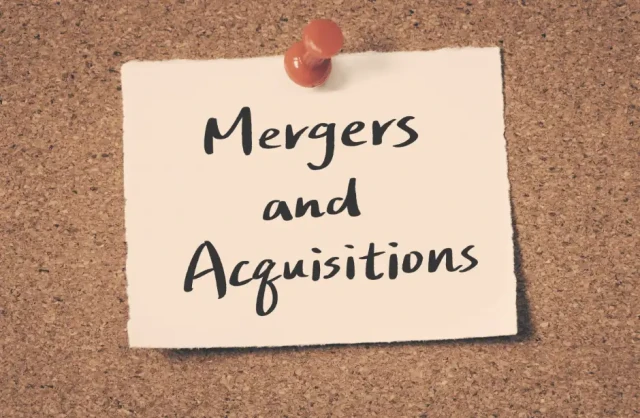The world of technology in human resources (HR) is changing fast. One thing that is happening a lot is that companies or companies that make HR software are joining together or being bought by other companies. This is called "mergers and acquisitions" (M&A). Businesses need to pay attention to this trend. As companies combine or get bought, it changes how HR software works, affecting how businesses use it in real-time. This can be good or bad, depending on how it's handled.
For example, customer service and how data is kept private could be impacted. It's important for businesses that use this kind of software to understand how M&A affects them. These changes can help businesses stay efficient, keep employee information safe, and retain loyal customers as well. The companies that are best at adapting to these changes will be the ones that stay ahead of the game in HR technology.
The Impact on Customer Service Post-M&A
Mergers and acquisitions (M&A) can greatly impact how a company provides customer service. Depending on how the merging companies handle the changes, this can be good or bad for customers. Here are a few things to keep in mind:
1. Technology and Processes:
- Positive: Combining the best parts of two companies' technologies and processes can make things work better and faster. For example, when two software companies merge, they might create a better product or service that's easier to use and has more features.
- Negative: Sometimes, when two companies combine, there can be problems getting everything working together. This can make things harder for customer service teams and may lead to temporary problems with service quality.
2. Customer Service Philosophy and Practices:
- Positive: When two companies merge, they might be able to bring together the best parts of each company's customer service. This can make the overall experience better for customers.
- Negative: Sometimes, the two companies have different ideas about how to provide customer service. This can lead to confusion and make it hard for customers to know what to expect.
3. Case Study: The Sprint-T-Mobile Merger:
This merger had a big impact on customer service. They combined some of the best parts of each company's customer service to create a good customer experience.
4. Importance of Communication:
No matter what happens during a merger, the companies need to be honest and tell customers what to expect. When Microsoft bought LinkedIn, it kept users informed about what was happening and interacted well with customers. This helped people feel more confident and trust the companies involved.
Data Privacy in M&A: Protecting User Information During Transitions

Mergers and acquisitions (M&A) can raise critical concerns about data privacy. As two entities combine, sensitive user information such as personal details, financial data, and online behaviour can become vulnerable, which, in fact, can sometimes affect the bottom line of the business.
Here Are Some Potential Data Privacy Issues During M&A:
Data Sharing: Sharing user data with potential buyers during due diligence creates a risk of unauthorised access or accidental leaks.
Data Transfer: Merging systems and databases can lead to data inaccuracies or inconsistencies, jeopardising its integrity.
Compliance Gaps: Different data protection regulations, like GDPR, can create compliance challenges, putting user data at risk.
The Importance of Stringent Data Protection:
To mitigate these risks, companies must prioritise robust data protection measures. This includes:
- Implement strong access control and high-level encryption for data storage.
- Conducting thorough due diligence on the privacy practices of the other party.
- Obtaining explicit user consent before transferring any data during M&A activities.
Regulatory Compliance is Paramount:
Furthermore, compliance with relevant data privacy laws, like GDPR, is crucial. These regulations offer data collection, storage, and access frameworks, ensuring user rights are protected throughout the M&A process.
Reassuring Users:
Companies can mitigate anxieties by communicating transparently with users. This includes:
- Clearly explaining the purpose and methods of data collection and sharing.
- Providing users with control over their data through opt-out mechanisms.
- Assuring users that stringent security measures are in place to protect their information during and after the M&A process.
By prioritising stringent data protection measures, adhering to regulatory compliance, and keeping users informed, companies can navigate M&A activities while keeping user data safe and secure.
Merging Minds, Merging Systems: Overcoming HR Software Integration Challenges

The human resources (HR) management world is now filled with different types of software catering to specific HR functions. While each system offers unique functionalities, juggling multiple platforms can lead to data silos and hinder workflow.
The solution to this problem is integrating different HR systems, but this path is not challenging.
- One of the technical challenges is compatibility issues.
- Different systems often use different data formats, APIs (Application Programming Interfaces), and security protocols, leading to data mapping problems and difficulties in establishing a seamless connection.
- Data integrity ensures consistency across systems, avoiding duplicate entries, inconsistencies, and incomplete information that can impact decision-making.
- Operational challenges like change management can also arise when transitioning from familiar systems to a new integrated platform. Effective communication and training are crucial to ensure user buy-in and smooth adoption.
- Integration projects can also disrupt vital HR functions such as payroll processing and talent acquisition. Careful planning and phased implementation are key to minimising downtime and maintaining operational continuity.
To Ensure a Smooth Transition
Businesses must conduct a pre-implementation assessment to identify potential compatibility issues, data quality concerns, and training needs.
- Clear communication with stakeholders must be maintained throughout the process, addressing potential anxieties and highlighting the benefits of integrated HR solutions and data management.
- Phased implementation is recommended, prioritising critical functionalities and minimising disruption.
- Rigorous testing and comprehensive training must also be provided to ensure users are comfortable with the new platform.
- Ongoing support should be offered to users during the transition and beyond to address technical or operational issues.

Preparing for the merge involves standardising data formats, identifying and rectifying errors and inconsistencies in existing data, and building a team comprising technical and operational resources to tackle the integration challenges. By understanding the potential hurdles and implementing these strategies, businesses can confidently navigate the integration process, minimising disruption and maximising the benefits of a unified HR ecosystem.
In conclusion, the impact of mergers and acquisitions on HR software users is significant and cannot be ignored. Businesses need to be aware of the potential changes that may occur and how they can adapt to them. By prioritising data privacy, implementing robust security measures, and keeping users informed, companies can navigate the M&A process while keeping employee information safe and secure. Furthermore, integrating different HR systems can help businesses overcome challenges while ensuring a smoother workflow. By staying updated with the latest news and advancements in HR technology, businesses can stay ahead of the curve and achieve long-term success.



